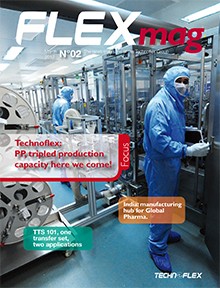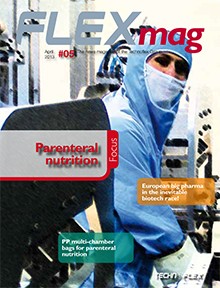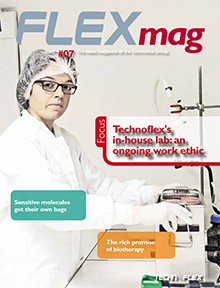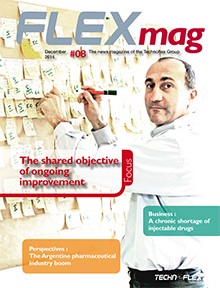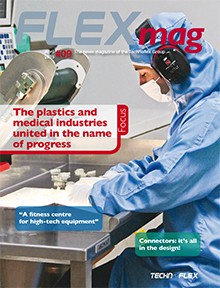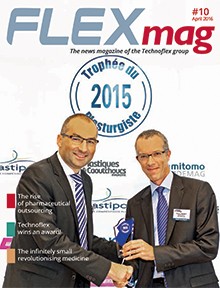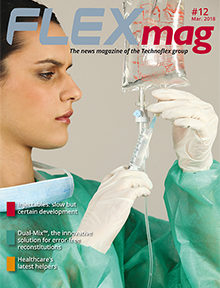Connectors: it’s all in the design
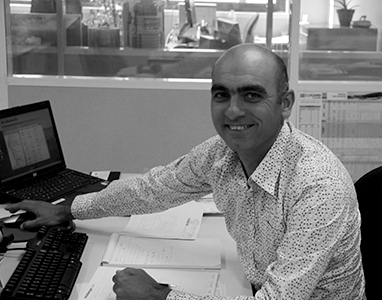 Frédéric Bonnet, Project Manager at Technoflex, gives Flexmag a look behind the scenes in his work. He shows how the production of even the smallest pieces requires inventiveness, rigour and determination. The industrial process leaves no room for approximation.
Frédéric Bonnet, Project Manager at Technoflex, gives Flexmag a look behind the scenes in his work. He shows how the production of even the smallest pieces requires inventiveness, rigour and determination. The industrial process leaves no room for approximation.
Sylvie Ponlot: Each connector has a precise function. How do you go about developing such distinctive pieces?
Frédéric Bonnet: As project manager, my job is above all about being able to organise, plan and supervise a project in order to bring it to fruition during the development phase. The design of a connector includes a great many stages, running from the specific request from a client (“specs”) through to industrialisation of the product.
The first stage is crucial: risk analysis. Here the aim is to identify and quantify the connector’s critical points which could affect its level of safety during use. We perform a thorough analysis to identify all and any potential risks. Once this phase is over, we organise a brainstorming session to come up with new ideas. These ideas take shape in the CAD (computer assisted design) phase. 3D design gives body to the product, and modelling allows us to explore several avenues. With the most promising models we design test prototypes using stereolithography*. A comparison between these prototypes enables us to choose such and such a development rather than another. The CAD phase accounts for 30% of the design time. Once the best development pathway has been selected, we start up the dimensioning process (tolerances, dimensions, etc.).
SP: This phase requires extreme care and attention, doesn’t it?
FB: It is by far the most important stage. It gives concrete form to the original idea and requires absolute vigilance. You have to take into account all the parameters that might have an impact on the finished product during industrialisation. This includes the layout and the dimensional and geometrical tolerances to be applied to the piece. Design is not limited to merely drawing a plan, doing a 3D design or producing a prototype. There are several parameters that need to be considered, such as the injection method. The position of the injection point can lead to poor filling quality with repercussions on the piece: traces of flux, visible weld lines, burrs… These are defects that absolutely must be avoided! The filling stage and the risk of venting require all our attention because the evacuation of gas from the plate results in traces of burns on the connectors. It’s also indispensable to define the method for ejecting the piece from the mould. We have to generate precise zones for the ejectors. Lastly, the person who designs a piece has to tell the toolmaker which level of shrinkage to apply to the mould. Shrinkage is the contraction of the plastic during the cooling process. A shrinkage dimension error can distort the whole piece!
SP: Next comes the control and conformance stage. How do you proceed?
FB: The specifications are our guide. They give us all the design input data. At the end of the process, it is crucial to do what we call the “design verification”. Each input data has its equivalent output data. In this way, we demonstrate that the finished product complies totally with the client’s request. We then make the final prototypes, which we present to the client for validation. They are manufactured in real production conditions. A mould is created and we inject the raw material requested by the client. Minor modifications are sometimes required. We adjust the dimensioning and make the necessary corrections. All in all, depending on the complexity of the project, it can take between 6 months and two years to get from specifications to final validation.
* Stereolithography is a method invented in the 1980s. This rapid prototyping technique is widely used at Technoflex for test prototypes. A digital file is used to manufacture pieces by polymerising resin with a laser.




